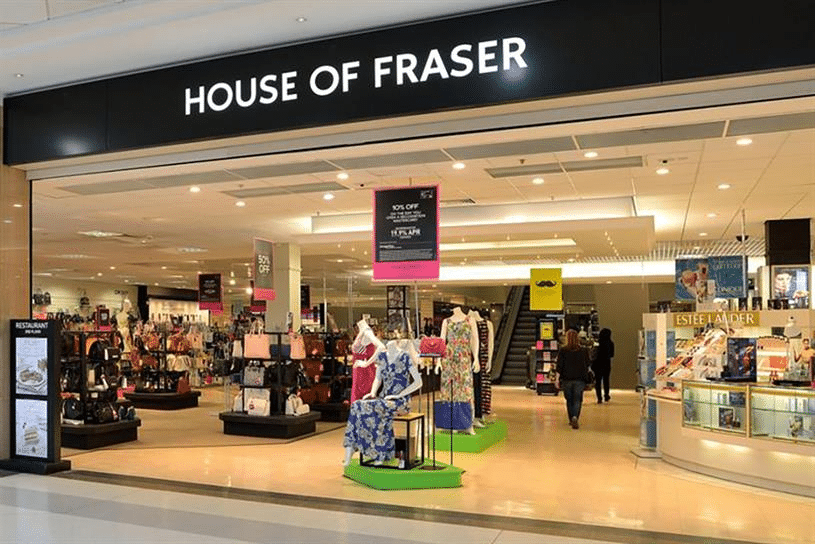For more than one hundred years House of Fraser stood as one of the most well-known department stores. Since its beginnings as a small shop at Glasgow before becoming an iconic brand throughout the UK House of Fraser shaped the shopping habits of generations of British customers. Like many department store chains, House of Fraser faced numerous challenges, which ultimately caused its utter collapse in the year 2018.
The tale of House of Fraser offers valuable insight into the development of British retail, the effects on consumer behavior that is changing and the struggles of established brands to adjust to the changing times of digital. It doesn’t matter if you’re interested by historical aspects of retail, business strategy or just curious about the fate of this once-powerful shopping spot, understanding House of Fraser’s story reveals vital lessons on how to survive in the age of modern commerce.
The Early Years: Building a Retail Empire
House of Fraser began in 1849, when Hugh Fraser and James Arthur established a modest drapery shop in Buchanan Street in Glasgow. The ambitious couple had a clear goal: to create an experience for shoppers that was more than selling products. They aimed to provide customers with high-quality products in a classy atmosphere with exceptional service.
The company’s growth lifeline was steady in the last decade of the 19th century. By the time the 1890s arrived the company had expanded the size of its Glasgow store and was acquiring other stores across Scotland. This strategy of acquisition would later become an important aspect of the growth of House of Fraser in the coming century.
Under the direction of Hugh Fraser’s son the business entered the 20th century in a confident manner. The younger Fraser continued to implement his father’s strategy of expansion, buying well-established department stores across Britain. Each purchase resulted in new customers, top retail locations, and a stronger market presence.
The Golden Age of Department Store Shopping
The mid-20th century was The House of Fraser’s Golden era. After the war, Britain was experiencing rapid economic growth and consumers were earning more money than they had ever had before. Department stores such as House of Fraser became destinations for families of all sizes, providing everything from clothes and cosmetics to furniture and toys in one place.
House of Fraser understood that shopping was now an enjoyable pastime, not only an essential requirement. The company poured a lot of money into creating stunning store spaces with spacious aisles, appealing displays as well as comfortable seating areas. Personal shopping assistance as well as gift wrapping restaurant options in the store made your visit feel like a treat.
The flagship stores of the retailer situated in London, Glasgow, and other cities that were major became social centers. Gathering with people with friends at House of Fraser for lunch and shopping was a popular tradition for a lot of British families. The advertisements of the company focused on the quality, elegance and the excitement of finding something special on an excursion to the shops.
Strategic Acquisitions and National Expansion
In the 1960s and 1970s House of Fraser continued its aggressive acquisition strategy. House of Fraser bought a number of established regional department stores, with famous names such as Rackhams located in Birmingham, Kendals in Manchester as well as Dickins & Jones in London.
This method helped House of Fraser to quickly establish a nationwide presence without the cost and time of building store from scratch. Each store was able to bring its own loyal customers and local market expertise. In the mid-80s, House of Fraser operated more than 60 stores across UK.
However, this strategy of acquisitions has also brought problems. The majority of the shops that were bought were old buildings located in prime locations, but costly. The maintenance and upgrading of these buildings required a significant investment over time. In addition, integrating various system and culture of stores was more difficult than originally thought.
The Changing Retail Landscape

The 20th and early 21st century brought revolutionary transformations for British retail. Out-of-town shopping centres offered easy parking, as well as modern facilities that the majority of high-street stores could not compete with. Specialty stores focused on particular areas of merchandise, and often have greater selection and more competitive pricing than the department store provide.
House of Fraser attempted to change its store layouts by modifying the formats and expanding its product selections. The company made investments in changes, introduced new brands and attempted to create more exciting shopping experiences. Certain stores were successfully modernized however others had to contend with the limitations of old designs and buildings.
The growth of online shopping posed the most difficult problem. Customers can now browse huge assortments of merchandise from the comfort of their homes and instantly compare prices, and receive their purchases directly. House of Fraser launched its own e-commerce site however, the company had a difficult time to integrate offline and online operations efficiently.
Financial Pressures and Ownership Changes
In the early decade 2000, House of Fraser was under financial strain. Rents were high for prime retail spaces and a decline in footfall at many stores and increased online competition all led to a shrinking profit margin. The company has tried a variety of methods to boost its performance such as closing stores or staff cuts, as well as efforts to revise lease conditions.
in 2006 House of Fraser was purchased in 2006 by Baugur Group, an Icelandic investment company. The new owners offered new investment and expansion into international markets. However the 2008 financial crisis affected the the other investment portfolios of Baugur Group which left House of Fraser without the anticipated support.
Following ownership changes, the company experienced temporary stability, but did not tackle the root of the problem. The company was still struggling with its high operating costs and changing consumer preferences and the requirement for substantial investment in technology to compete online.
The Final Chapter: Administration and Acquisition
In the year 2018, House of Fraser entered administration, which is a type of protection from insolvency that enables struggling businesses to operate in the meantime, while looking for customers or restructuring alternatives. The news was shocking to employees and customers who believed that the retailer of the past could find a way to make it through.
Sports Direct, owned by Mike Ashley, emerged as the winning bidder for the House of Fraser’s properties. The purchase saved a few jobs and stores, however several locations were shut down for good. House of Fraser is a House of Fraser brand continues to be available online and in selected physical stores however, with a smaller footprint than when it was at its height.
Lessons learned from House of Fraser’s Journey

The House of Fraser story illustrates some important trends in contemporary retail. Traditional department stores face particular problems when competing against specialized retail stores as well as online marketplaces. It isn’t just about having excellent products and services but also efficient operations, strategically stores, and a powerful digital capabilities.
The experience of the company also demonstrates the necessity for adapting models of business to change in customer behavior. Although House of Fraser made efforts to modernize, the speed of retail’s evolution was quicker than the company’s ability to change its processes and customer experience.
The Enduring Impact on British Retail
Despite its challenges the influence of House of Fraser on British shopping culture is still significant. House of Fraser helped to establish a lot of the standards for service and shopping experiences consumers continue to expect today. From personal shopping experiences to stunning store settings, the innovations of House of Fraser set industry norms.
House of Fraser also had a significant part in introducing international beauty and fashion brands to British customers. Many shoppers found their preferred fashion, cosmetics and home decor brands via House of Fraser’s carefully selected assortment.
What’s Next for Department Store Retail
The story of House of Fraser continues with new owners as Sports Direct attempting to revitalize the brand to appeal to modern consumers. The main challenge is how do you preserve the tradition and high-quality associations associated with the traditional department store while also establishing an operation that is sustainable in the new digital age.
The other department stores are observing closely to determine what strategies are successful. The lessons that were learned from the House of Fraser’s change could help define the future in department-store retail in Britain and beyond.
The House of Fraser legacy reminds us that even the oldest brands have to constantly evolve to stay relevant. Although the company’s golden era is over but its influence has had a profound impact on British shopping culture as well as the lessons learned from the company’s history continue to shape the way we think about shopping, customer service and business adaption. For visit living room ideas


















